Vintage Treasures: The Walking Drum by Louis L’Amour
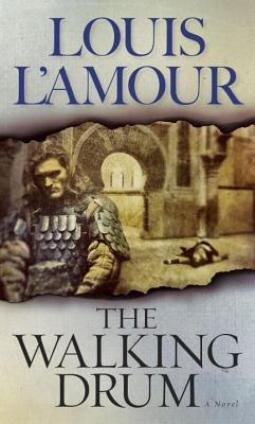
I read this book so you don’t have to.
Perhaps this review will make you want to read it.
Perhaps you shouldn’t.
It’s complicated.
The Walking Drum is the only medieval adventure written by Louis L’Amour, the mindbogglingly prolific author of a zillion Westerns. That alone makes it a retro must-read. A medieval romp by a horse-opera yarn-spinner who had also been a professional boxer and merchant seaman. How can we resist?
In actuality, the book is… odd. It fulfills expectations, both positive and negative, exceeds them, falls well short of them, and — ultimately — could have done with an edit before being released into the wild.
Reading it has made rethink my choice of reading matter (and also my strategy as a writer, but that’s for another article). Let me start from the beginning
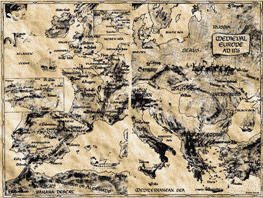
The Walking Drum is set in the 12th century. The hero, Mathurin Kerbouchard, is the son of a minor Breton lord and corsair who is missing presumed dead or enslaved. When the local robber baron destroys his home and kills his mother, Mathurin makes for the sea, ends up enslaved, escapes, becomes a scholar, a warrior a…. and eventually catches up with his father who — naturally — has been enslaved by the Assassins. (You can read a full summary on the Wikipedia entry.) Somewhere in the middle, he becomes part of a heavily armed merchant caravan that trundles across Europe destroying anybody that gets in the way. The merchants march to the sound of the drum, hence the title.
I expected something energetic and pulpy, perhaps Robert E Howard with more bodice-ripping, and that’s what Louis L’Amour delivers: Mathurin rollicks from one escapade to another. He always seems to be navigating a secret passage, or a carving his way through a fight, or in disguise, or facing off against a high-ranking adversary. There’s plenty of implied… swiving as well.
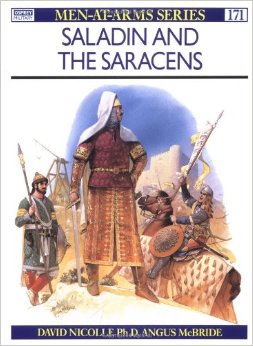
Unfortunately, this pulpiness means that the plot could be summarised as “Random Medieval Crap Happens”.
It really does feel random. If it were a more modern work, I’d suspect it of being a thinly disguised transcript from a roleplaying campaign. About half way through I started imagining it laid out like one of those old Traveller patrons books:
Roll D6 to see who you encounter: 1. High ranking lady in trouble; 2. New friend who will be charmed by your persona; 3. Somebody who wants to exploit you or use you in their plans (on a “6” this is a high ranking lady); 4. New Enemy; 5. Old friend; and 6. Old enemy.
At this point, I actually started reading on with renewed interest.
The Walking Drum is — mostly — well-researched and written by a veteran genre writer, so it really is like a compendium of Medieval adventure seeds for a world without magic or elves or global conspiracies. I suspect I may be revisiting it with my GM hat on, or even my writer one. (There’s something about the Middle Ages that makes my brain seize up. Perhaps you can know a setting too well?)
Alas, this randomness — charitably making it a “picaresque novel” — brings us to its literary failings.
First and foremost, it doesn’t have a structure. It really is “Random Medieval Crap Happens on the way to rescue Dad“. It’s best enjoyed as a series of linked short stories, but on their own, each sequence is too short and sketchy to be truly compelling. Harold Lamb is better. There are at least a dozen novels in there waiting to get out.
Second, Mathurin Kerbouchard is arguably a Mary Sue, and certainly what my son would call “OP’d“. Get this:
- He’s a trained druid (DRUID!?!!?). He can memorise entire books, learn languages at the drop of a hat…
- He’s so well read he can spot Hittite symbolism in a carpet, and perform alchemy on the hoof.
- Oh, and he’s also a supreme seducer, thief and warrior.
The end result is Lord Flashheart does Baron Von Münchhausen, but without the laughter track. If this were the transcript of a FATE campaign, then the author would have had to have rolled several characters into one.
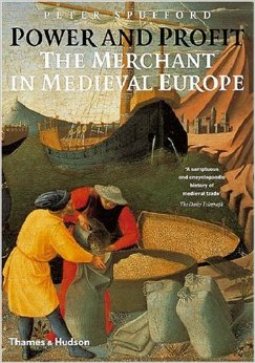
Third, L’Amour intrudes his research… I mean really intrudes his research. Like you could make an Oglaf cartoon about it.
There are long passages about the history of this or that place, or the socio-economic changes happening around the hero. He has access to knowledge he shouldn’t have — e.g. Hittites — and knows things he couldn’t, and he keeps sharing them with us.
I certainly didn’t expect this level of research from a cowboy writer. He really does have a handle on the era, especially the intellectual culture and the differences between Christendom and the Islamic world. He has an exhilarating sense of the entire map, not just the tiny north-west corner with knights and castles in it. L’Amour obviously loves this setting. It’s as if he’s been itching to write this book his entire life, and now, near its end, is trying to do it all at one go. Unfortunately this heroic attempt appears to coincide with a phase in his career when he was uneditable. A few score red pen marks would have greatly enhanced this book.
There are also a few bloopers ranging from the niggling to the more significant. We can forgive him the anachronistic scimitars — at least he knows what a falchion is — but not so easily the wild anachronisms in available literature. And then there’s the druid business, which would be forgivable if he weren’t otherwise so busy flaunting his authenticity.
Most importantly, do we believe in the armed merchant caravan which provides both the title and the most memorable sequences? I don’t know.
The academic-but-highly-readable book Power and Profit: The Merchant in Medieval Europe — which however focusses on the 13th-16th centuries — has local rulers providing escort in exchange for toll and kickbacks. True, medieval merchants could be an armed and bellicose lot, but I am doubtful anything looking like a small army would have travelled quite so far without being brought to a decisive battle. Was L’Amour filling the gaps or did he have a book I don’t?
I’m going to have to do some digging…
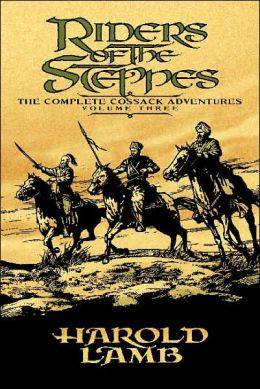
Louis L’Amour’s The Walking Drum is entertaining in small doses, but even then flawed by anything like remotely modern standards. There are obvious reasons for reading it — genre history, adventure seeds, or completism if you are a L’Amour fan — but plenty of reasons not to.
I read this over the Christmas break; Was battling through this rambling edifice really the best possible use of my precious reading time? True, it had some high points but — with the exception of a handful of well-recognised vintage greats such as Harold Lamb — modern writers generally do it better (link).
Modern writers could also do with our support.
Just for example, my friend Scott Oden apparently writes rip-roaring Historical Adventure. If I was in the mood for taking a risk, why wasn’t I reading him instead?
Why do I — we! — automatically look to battered paperbacks for a satisfying comfort read? What’s wrong with us? Or is there something wrong with modern genre fiction?
My belated New Year resolution is: No more old stuff unless somebody else can vouch for it.
As I said, I’ve read this book so you don’t have to. Now go buy something written by somebody who is alive right now.
(There are some writerly things to learn from this book as well — but that’s for next week.)
M Harold Page is the sword-wielding author of books like Swords vs Tanks (Charles Stross: “Holy ****!”) and has an academic background in Medieval History. For his take on plot and narrative, take a look at his Storyteller Tools: Outline from vision to finished novel without losing the magic.
Thanks for this Harold. Now I am obliged to ignore your warning and find a copy of The Marching Drum to
Whittle away my own precious reading time.
I have never read L’Amour. For that matter bar some of David B Riley’s weird westerns can’t say I have read any true western novels.
Howard’s Westerns are rather good…
I should make the effort. I think I have one of is westerns – The Dark Man. Also as my ongoing quest to outdo John with the Ace Doubles, sooner or later I will have to pick up some of their westerns.
This is one of the few L’Amour books I ever read, years and years ago. I was always vaguely disappointed that none of the projected sequels ever emerged.
(I am correct in remembering that sequels were projected, amn’t I?)
As far as sprawling historical epics of the 1980s, give me Gary Jennings (Aztec) or Nicholas Guild (The Assyrian) or maybe Ken Follett (Pillars of the Earth).
Yes there were supposed to be sequels. I think the real disappointment is that he didn’t turn to historical earlier, when he was at the height of his powers. The book is a failure, but a heroic one.
I used to read a lot of Louis L’amour’s books. Most of his earlier books and the majority of his Sackett novels are very good. I would also recommend Last of the Breed, which was very good.
But what made L’amour so successful was also what hampered his creativity to going places he wanted to go. His publishers wanted very much for him to stick to a formula and didn’t give him of a shot at some works he really wanted to do. It wasn’t until very late in his carreer that he was able to branch out some. Walking Drum, if I recall correctly was a book he had been working on for a long time but had a hard time selling to his publishers. I think if he had been able to break it down to a series instead of putting so much into what was to be a the first book, it would have been a lot better.
One of the constant themes of L’amour’s books was that there are eras in which bad, hardened, men were necessary to pave the way for civilization. I think that isn’t far from Robert E. Howard’s way of thinking. Both author’s heroes are very similar; usually of Irish or anglo-saxon descent, with a dark side that made them skilled at violence.
When I read this (back in college, late 1980s), I was spending my summers working in the local bookstore. We actually had a pretty extensive Western section — lots of L’Amour, and a bunch of others whose names escape me. I did read some other L’Amour stuff — I started with the Sackett books, but never quite made it into the actual Westerns; the ones I read were all more Colonial-era stuff.
Just fixed a typo a friend pointed out. I’d written…
“Modern writers could also do with out support.”
And I meant:
“Modern writers could also do with our support.”
“Random Medieval Crap Happens”
Sounds like a good title for a film…
Seriously, though. Sometimes life does feel like a collection of stuff just happens, and we deal with it, or try to survive it, or get crushed.
Not sure that would make a good story, though…
You said.
True, medieval merchants could be an armed and bellicose lot, but I am doubtful anything looking like a small army would have travelled quite so far without being brought to a decisive battle.
I thought most of the history of warfare was entirely about armed groups trying to avoid provoking the other side into battle and at the same time trying to avoid looking like easy prey.
On my expeditions, I try to get my clients to look like they are not a threat, not a victim. And part of that is choosing how many of you travel together, part is to do with the age range of the group, part is to do with dress, part is to do with how you interact with each other.
For example, a group of ten big and loud 18 year old lads wearing hoodies appears to be more threatening than a group of ten big and loud 18 year old lads wearing hoodies and accompanied by an adult who occasionally rebukes them, occasionally jokes with them…
Oddly the Martial Culture in Early Modern Germany talks about the same consideration. Going armed was to forfeit the moral and legal protections of being a non-combatant.
I wonder if this is why pilgrims carried staffs? You can’t exactly put one to somebody’s throat, but you can break an assailant’s arm.
I would also recommend Last of the Breed, which was very good.
Except for the last ten pages or so, which get very “better wrap this up!” in a hand-wavy way. (This is the only L’Amour I’ve read. I trust he usually does better with endings.)
I’ve had a mixed relationship with L’Amour’s non-Western work over the years. His semi-nonfiction books, like Yondering and Education of a Wandering Man, are quite good. Especially Education of a Wandering Man, which is a love letter to reading.
In terms of fiction his books like “The Walking Drum,” and “Fair Blows the Wind” are historically accurate, but often somewhat bland. Good action scenes, but no one seems three dimensional.
It can be said that while L’Amour published hundreds of books, he only wrote about a half dozen stories. Meaning the plots repeat in a lot of his Westerns. Both the “The Walking Drum” and “Fair Blows the Wind” have similar plots to his westerns. Hard men, in hard situations, making hard choices.
His most original work by far is “Haunted Mesa.” One of the best cross-genre books I’ve ever read. A mystery that reads like the love child of Larry McMurtry and Stephen King.
The two L’Amours I always recommend are Education of a Wandering Man and Haunted Mesa. If pressed to give one of his traditional works, I usually go with Hondo.
I agree with everyone’s comments above. Although I have not read Haunted Mesa, I have heard many say that is L’amour’s best.
As far as his more regular works. The best Sacketts are the early frontier stories, especially Jubal Sackett, Warrior’s Path, and late frontier, To Ride the River.
Hondo is my favorite of his Western’s. Also recommend, Conager, and The Quick and the Dead, which were both excellent Sam Elliot movies.
As a reader of every L’Amour book, including the short story compilations, this review is, in my opinion, a bit harsh. Writers write, first to get published and paid and hopefully) as they get successful are able to write what they want to write. Most of L’Amour’s westerns have moderately simplistic plots, white hat vs. black hat characters and are designed for reading enjoyment rather than deep plots and masterful prose. That being said, many (including the Walking Drum) have at their heart the message: “Do the right thing”. As to the comment “Random things happen…..”, Candide, could be the prototype for that comment with the only difference is that A) In Candide he may be the unluckiest person ever, and B) It is considered in the Greatest Literature categories while L’Amour was writing for entertainment value. All of L’Amour’s books have entertainment value, are fun reading, are typically short (except for this one, Last of the Breed, and 1 or 2 others). This was because that’s what his publishers wanted, that’s what his fans bought, and since he started writing for magazines that was where his background as a writer began with. Trying to judge a writer who writes for entertainment (similar to Haggard) compared to literary masterpieces in unfair to the author as well as the potential reader who would enjoy entertaining books. My only complaints with L’Amour? One is that you pretty much know who is going to come out victorious before you finish the first page, no matter what tribulations ensue (but the same could be said of Cornwell and other very good modern writers) and what I call “the world isn’t THAT small of a place” writers shortcuts, so that no matter how far the protagonist goes he ends up bumping into the antagonist again and again. Other than that a fun writer of entertaining books. Tucker, Reilly’s Luck, and To Tame a Land are some of my favorites.